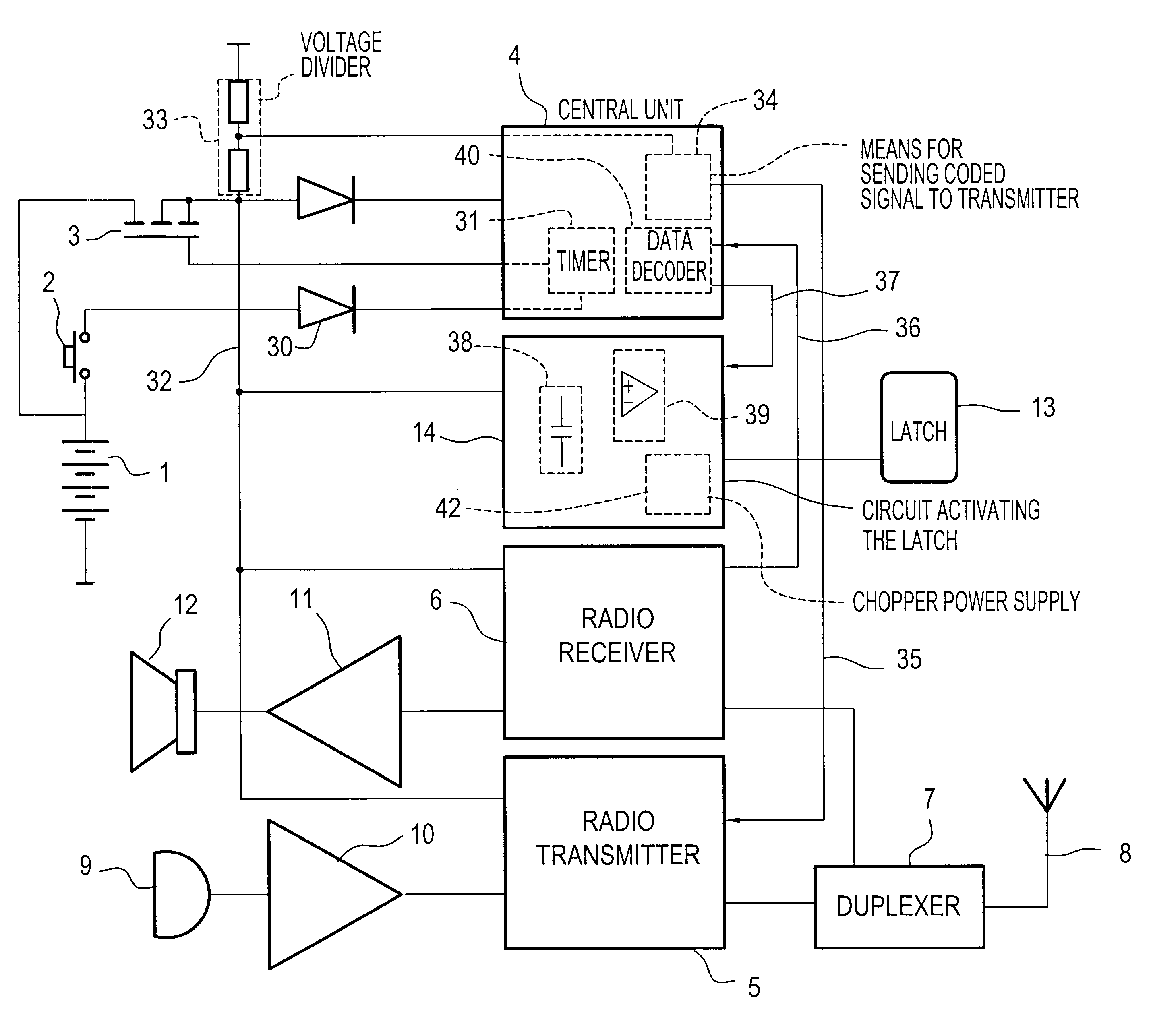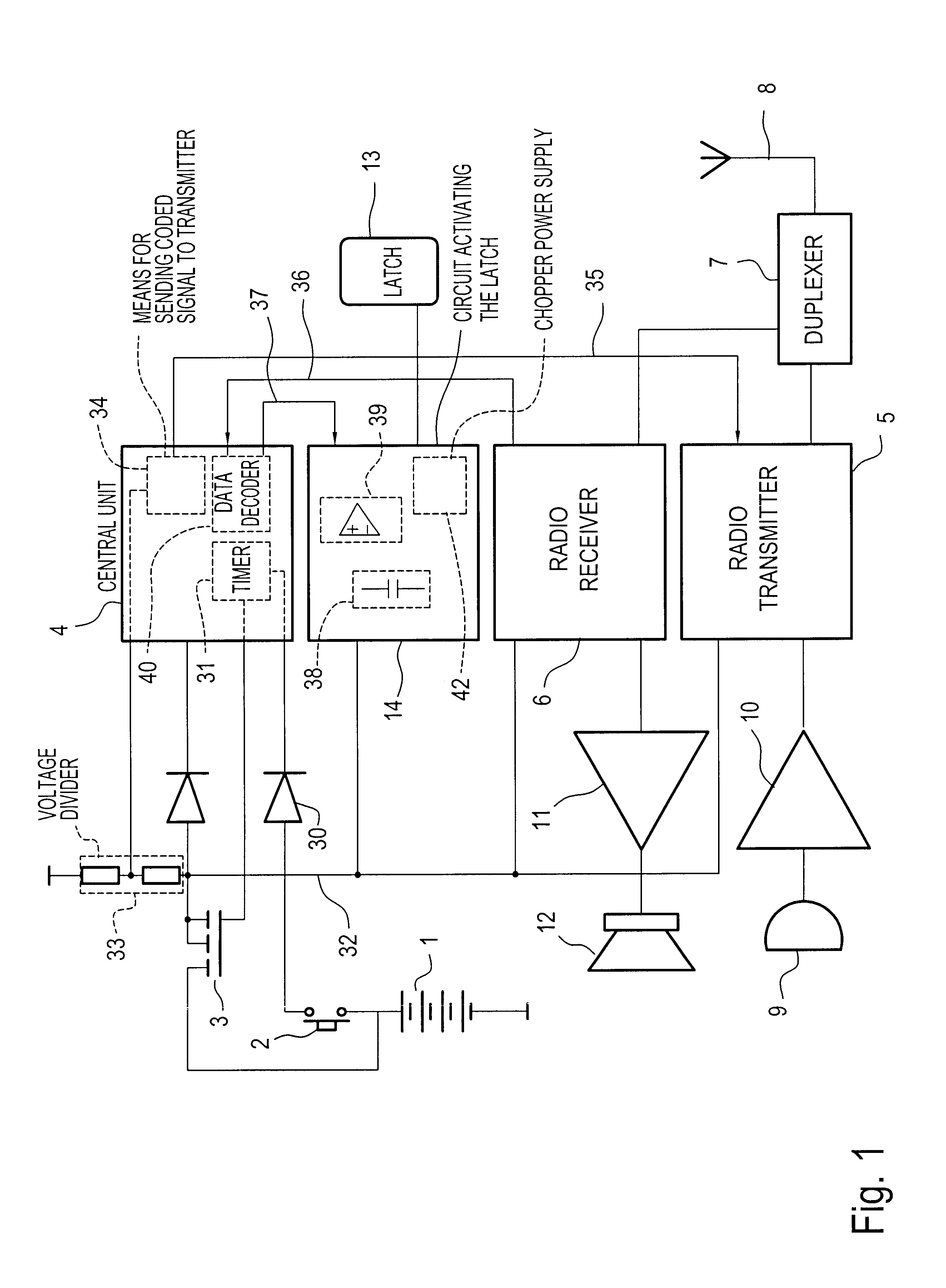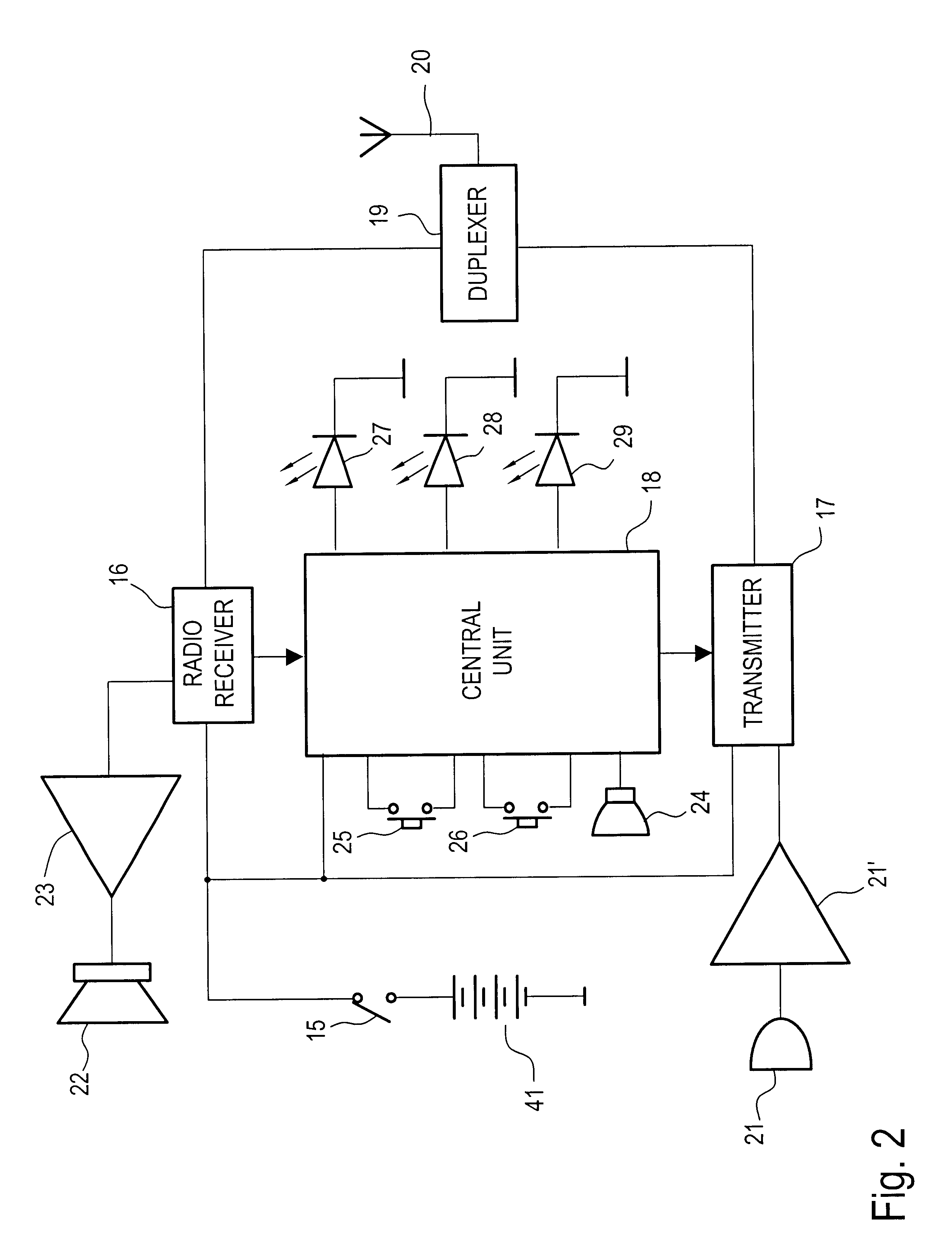Wireless door intercom
a door intercom and wireless technology, applied in the field of wireless door intercoms, can solve the problems of electrical latches, inability to provide solutions through wireless telephony techniques, and complex information, and achieve the effects of reliable control of latch opening, low cost, and good quality
- Summary
- Abstract
- Description
- Claims
- Application Information
AI Technical Summary
Benefits of technology
Problems solved by technology
Method used
Image
Examples
Embodiment Construction
As shown in FIG. 1, the street panel comprises:
a stand-alone electrical power supply 1 constituted in the particular embodiment described by a series connection of four batteries of the commonly available LR 20 type (also known as "D" type);
a switch 2 acting as a call button;
an electronic switch 3;
a central unit 4;
a radio transmitter 5 type of the narrow band (.+-.1.5 kHz) FM type having a transmission frequency lying in the 27 MHz band, for example, e.g. 26.995 MHz or 27.045 MHz or 27.145 MHz;
a radio receiver 6 of the narrow band (.+-.1.5 kHz) FM type receiving at a frequency situated in the 40 MHz band for example, e.g. at 40.680 MHz;
a duplexer 7 connected firstly to the transmitter 5 and to the receiver 6, and secondly to a common antenna 8 which can be constituted, for example, by a simple length of strip coaxial cable;
a microphone 9 connected to a preamplifier 10 itself connected to the transmitter 5; and
an amplifier 11 having its input connected to the receiver 6 and its outpu...
PUM
 Login to View More
Login to View More Abstract
Description
Claims
Application Information
 Login to View More
Login to View More - R&D
- Intellectual Property
- Life Sciences
- Materials
- Tech Scout
- Unparalleled Data Quality
- Higher Quality Content
- 60% Fewer Hallucinations
Browse by: Latest US Patents, China's latest patents, Technical Efficacy Thesaurus, Application Domain, Technology Topic, Popular Technical Reports.
© 2025 PatSnap. All rights reserved.Legal|Privacy policy|Modern Slavery Act Transparency Statement|Sitemap|About US| Contact US: help@patsnap.com



